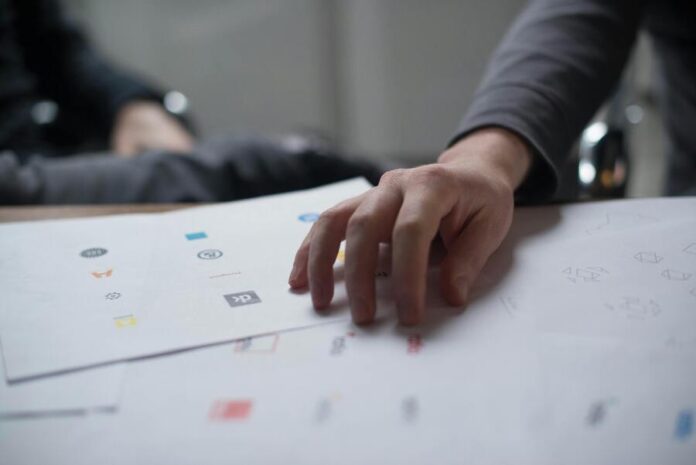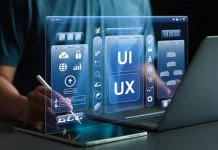
Your logo is the face of your business, and the best designs must be visually appealing, smart, memorable, and future-ready.
To that end, it’s sensible to stay on top of design trends that are at play today. That way your company can be represented in a way that feels fresh and modern, rather than behind the curve. Here are just a few examples to guide your choices.
Minimalism with Maximum Impact
Minimalism continues to shine in logo design. It strips away the unnecessary and leaves only what’s essential. This makes your brand message clear and unmistakable.
The beauty of minimalism lies in its adaptability. For instance:
- Clear lines work across various platforms
- Simplicity enhances versatility, from mobile screens to billboards
- Few elements mean stronger brand recognition
A minimalist logo doesn’t have to be boring or generic, though. Designer experts like those at Rabbit can inject subtle creativity by playing with negative space or using unique typography.
Take the example of Apple’s iconic emblem, which is a perfect blend of simplicity and sophistication. In its current form it has existed for over a quarter of a century, reflecting the power of the design in spite of its unfussiness.
Some emerging brands choose bold color contrasts within a minimal framework for an extra pop. Slack’s logo is perhaps the best example of this, with four hues combined simply yet impactfully. It comes down to how minimalist logos manage to provide both timeless appeal and flexibility for modern digital needs. Using an AI logo maker such as Looka can help you create and visualize the logo that you want and you can tweak it as much as you like.
There are limits to minimalism, of course. For instance, PayPal has recently caused controversy with the 6th redesign of its logo since its foundation in 1999. All color and personality has been leached from the look and feel, leaving critics calling it blandly generic. As with anything, it’s a balance you need to strike with care.
Dynamic and Responsive Logos
Logos have to be capable of adapting according to the platform they’re featured on, and this is as a result of the diversity of digital platforms that brands must occupy today. Dynamic and responsive designs are a necessity because of this, and they can adjust seamlessly so that a business’ carefully constructed identity is expressed consistently.
Key benefits include:
- Adaptation for diverse screen sizes
- Animated elements bring a logo to life
- Scalability without losing clarity
Netflix’s animated “N” is a great example of this, as it can transform into the broader wordmark depending on the platform or format. This versatility enhances viewer engagement while maintaining brand identity.
These designs aren’t only able to shrink or expand. In addition to this, they can interact with users through subtle animations, giving them a little buzz of recognition across a range of devices.
Smaller startups like Medium have utilized dynamic logos effectively by using an adaptable M that morphs slightly depending on usage context. It adds personality and vitality without being overwhelming.
As technology evolves, these types of logos will become essential for businesses looking to stand out online in all the right ways. Expect this trend only to gain traction as companies seek deeper connections with their audiences.
Abstract Geometry in Branding
Geometric designs are rising, offering an abstract twist to logos. These elements provide a unique visual identity that draws attention and sparks curiosity.
Why use geometric shapes? They offer:
- Clear structure, creating order
- Versatility across diverse media
- Bold aesthetic with minimal clutter
Brands like Airbnb utilize abstract geometry effectively. The logo uses simple curves and lines that form an appealing symbol with multiple interpretations. It strikes a balance between creativity and simplicity.
These designs allow brands to be both modern and memorable without complexity or distraction. Sharp edges paired with softer forms create depth and movement in otherwise flat visuals.
This approach suits tech companies well. Take the example of the Cisco bridge made from vertical bars, which is simple yet loaded with meaning. But businesses outside tech can leverage it too by injecting fresh style into traditional sectors through clean-lined abstraction that intrigues viewers instantly while leaving lasting impressions.
The Last Word
Innovative logo designs capture the essence of modern trends, marrying creativity with function. Exploring these elements lets businesses ensure their brand remains relevant and engaging.
Investing in fresh ideas sets you apart from the competition. From minimalism to dynamic adaptations, embracing emerging styles enhances recognition while allowing flexibility for future changes. Keep an eye on what’s next so your logo continues to resonate going forward, particularly if you’re entering a crowded market with a lot of larger competitors to take on.








